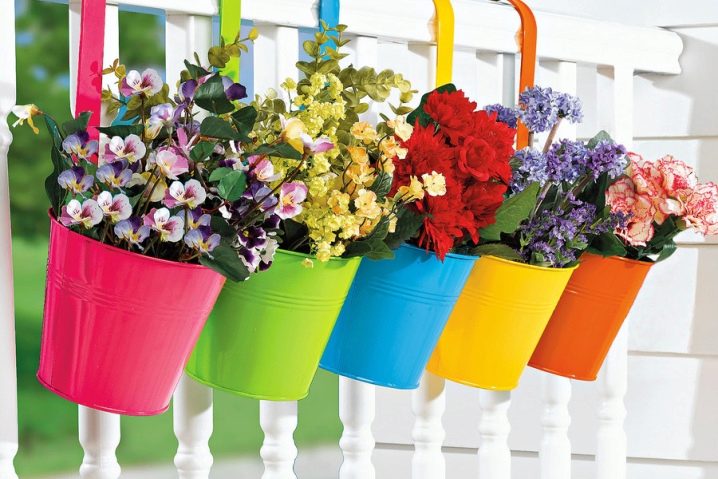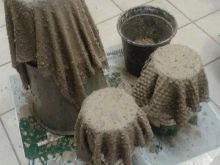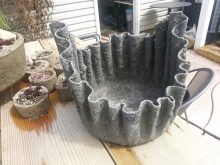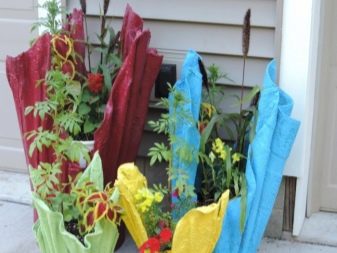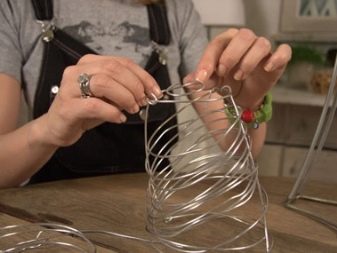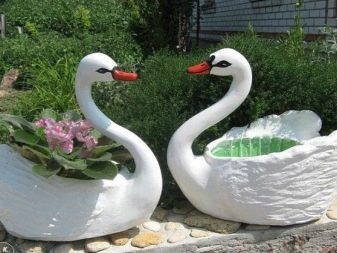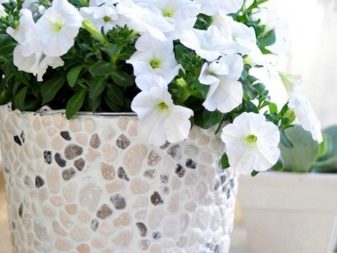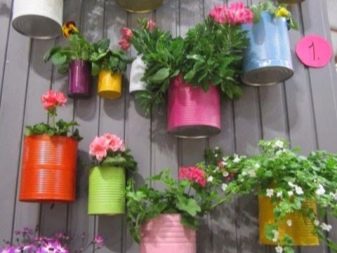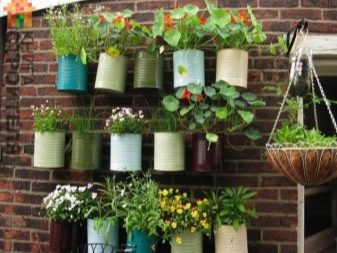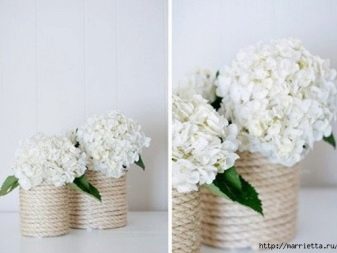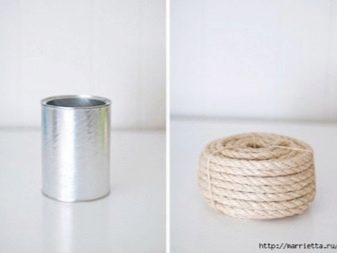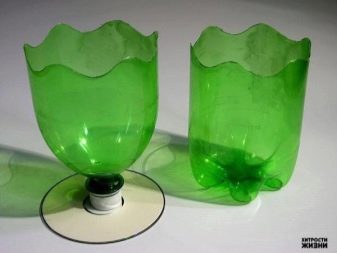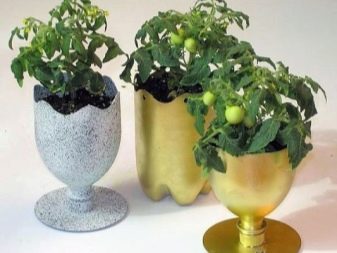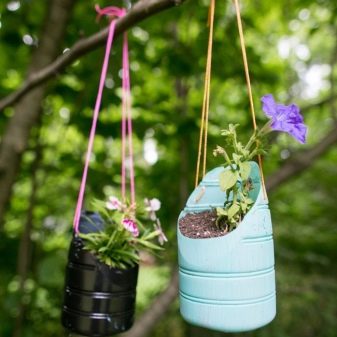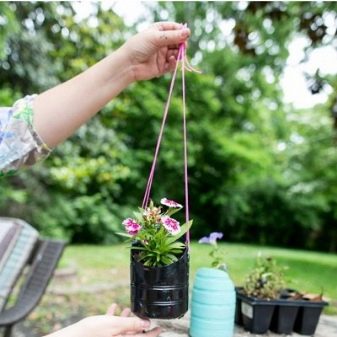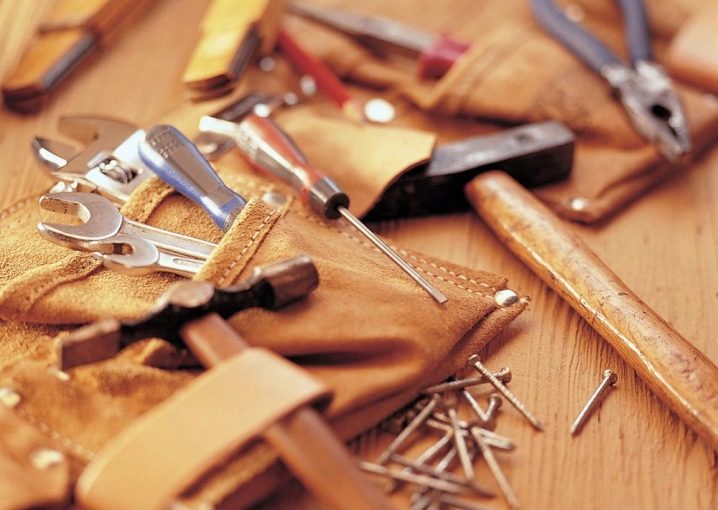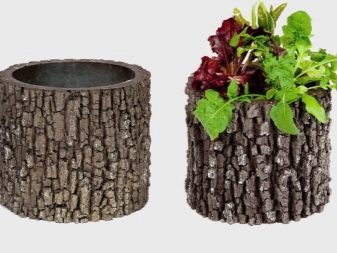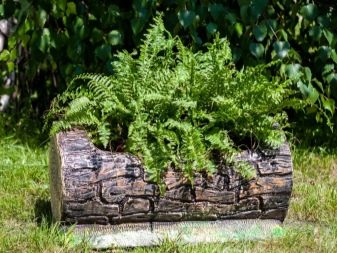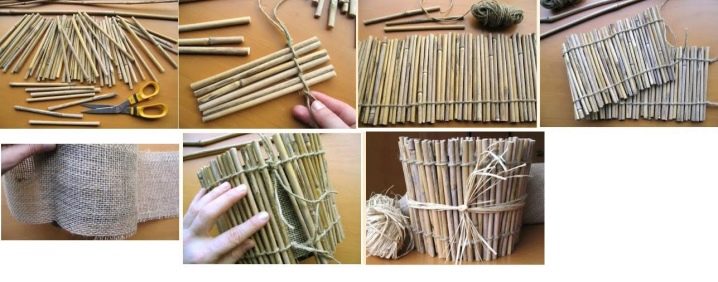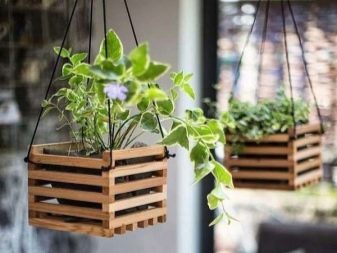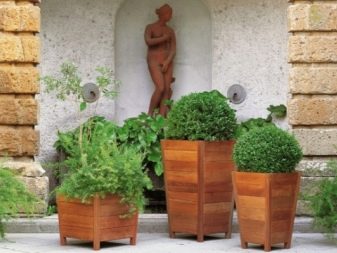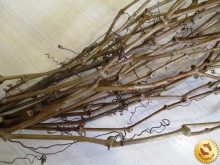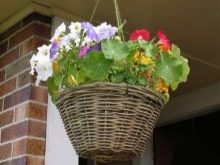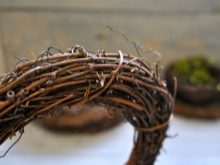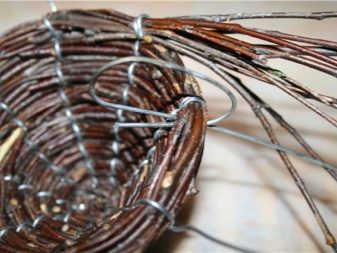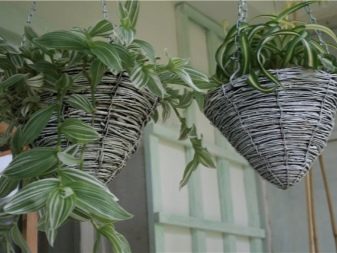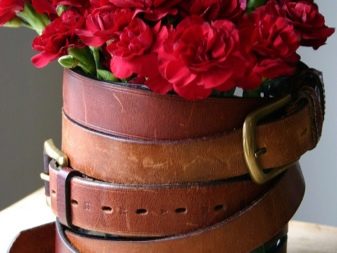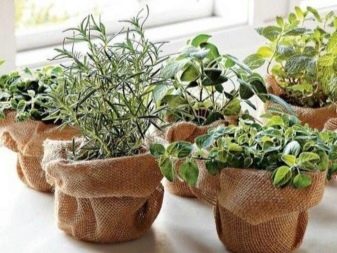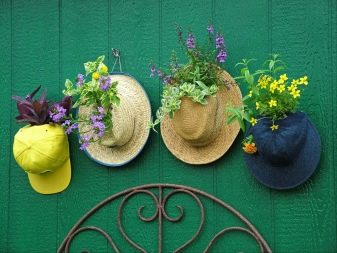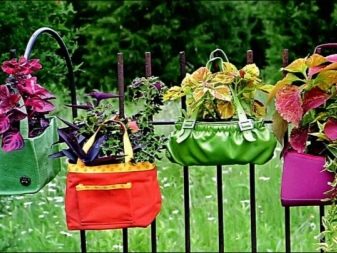How to make a garden hood with your own hands?
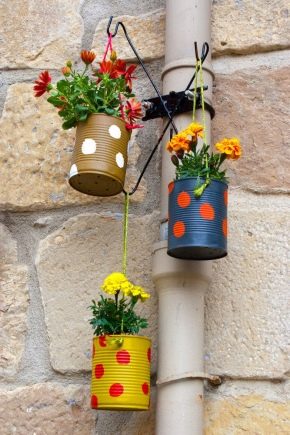
Even the most beautiful flowers need appropriate design. The most popular and spectacular way of framing flower beds are street pots. Bright suspended compositions from all kinds of available materials will be a real decoration of the dacha. This art object can be made with your own hands.
We offer to get acquainted with several ways to create original hanging vases from the most simple things.
Cloth and cement
To create such a garden planter, you will need the following materials:
- cement;
- unnecessary tablecloth;
- capacity for the shape of the product;
- nozzle on the drill "mixer";
- paint.
Cement flower pots are the easiest, but effective way to decorate your garden. This procedure is simple and accessible to everyone.
First you need to decide on the size of the future pots. To do this, lower the tablecloth into an empty bucket and mark on its walls how much space it takes. Pour water into the bucket up to this mark, add cement to it and mix thoroughly with a mixer. The cement mixture should resemble liquid sour cream - the consistency should not be too watery or too dense.
After preparing the mixture, place a tablecloth in it and let it soak well. If the solution is prepared correctly, the fabric will be soaked for several minutes. Next, take the container prepared in advance and hang on it the tablecloth soaked with cement. To ensure that the finished pots are smooth, gently flatten the edges of the canvas and leave to dry completely. After the cement has completely hardened, remove the tablecloth from the mold and proceed to painting.
For dyeing it is best to use concrete paints, their use will help give the product strength and make it more durable. The pot is ready and can be used for its intended purpose.
Of plaster
This method is the fastest and most inexpensive. Ease of use of this material allows you to make the product yourself, without using any special tools.
You will need:
- gypsum;
- wire;
- small bucket;
- paint;
- strips of fabric up to 10 cm wide;
- protective varnish.
First of all, you need to design a framework that will become the basis for the future of flower pots. To do this, braid the surface of the bucket with wire. For a more beautiful view of the product, the edges of the wire should be bent. Trying not to break the resulting structure, the finished wire frame must be removed from the bucket.
The next stage is the preparation of the solution from gypsum and water. Mix the solution should be up until its consistency does not look like liquid sour cream.
Now go to the final step. Dip the strips of fabric into the resulting plaster for a few minutes. Wait until the fabric gets wet and take out the strips one by one, overlaying the wire frame. To design was strong enough, the tape should be applied in several layers. The resulting product should be processed over the entire surface of the remaining plaster composition andleave for a day to dry.
To make the resulting pots, at its discretion: beads, pebbles, glass. Product design can be anything, as long as it is in harmony with the exterior of the garden and like you.
From tin cans
Making pots from tin cans is one of the most economical options. For the manufacture of beautiful products will need only a can, rope, primer and acrylic paint. It is best to use cans of paint and varnish materials, they are more durable and the pot life will be longer.
The first stage is preparation. Remove the label and the remaining adhesive from the tin can. This can be done quickly and easily with a solvent. Next, a primer is applied to the surface of the can. It is necessary not only to improve the adhesion of paint, but also helps protect the product from corrosion and premature damage.
You can color the finished product in any color, it all depends on your imagination. All sorts of drawings, patterns - any decor is appropriate here. After drying paint pots must be covered with an additional layer of varnish.
The decorative rope will help to make the product more interesting.Cut it into pieces of 100 cm and assemble into a knot at a distance of 150 mm from the edge - the original pots are ready!
From plastic bottles
Plastic bottles are the most common and affordable material used in hand-made art. Often, large 5-liter bottles are taken as the basis, the size of which is optimal for creating original and effective cache-pots.
The first method is the manufacture of classic pots, for this you need to prepare:
- a bottle;
- sandpaper;
- glue;
- scissors;
- two disks;
- paint.
Using a knife or scissors, cut the bottle in half and sand the surface of the discs with sandpaper. We glue one part of the bottle with the bottom to one disk, and the top part to the other, after unscrewing the cap from the bottle. After the glue dries, screw the plastic part back to the lid. Thus, you will make two blanks that can be evenly painted with acrylic paint.
The second way to create products from a plastic bottle. For this you will need:
- bottle;
- paints;
- scissors;
- rope.
As in the first embodiment, the bottle should be cut in half. In this case, we need only the lower part.On the sides of the blank it is necessary to cut small holes for the rope. The final stage is painting and trimming the top edge. In the painting of the product, you can apply all the artistic skills. On the walls of the resulting pots, you can draw any patterns, geometric shapes, animals. Pass the rope through the holes and the pots are ready!
From wood
To create a wooden planter, take a small stump, plank or log.
You will need:
- wood;
- drill with a diameter and length of drill from 20 cm;
- chisel;
- special impregnation for wood.
Consider in advance the shape of the future homemade pot and, based on this, pick up a log with a small diameter. Having decided on the height of the pots, measure the necessary part and cut it off. Make a row of holes at the top of the log. This will help to destroy the middle of the tree, which can then be easily removed with a chisel. You should have a smooth beautiful container.
The inner walls of the product must be treated with a special protective composition, which will avoid the decay of wood, prolong the life of use of pots and give the walls strength.
Wooden pots can be used as a hanging pot. To do this, cover the container with plastic and lay out the drain on the bottom of the pot. Only after that the pot can be filled with soil and start planting a flower.
Flower pots made from wooden sticks look original. Many modern designers are actively using such decorative items in the creation of copyright projects.
You will need:
- small wooden sticks of the same diameter;
- tight rope for attaching parts of the structure;
- plastic pot;
- sackcloth;
- glue.
To begin with, a flower pot prepared in advance is wrapped in a piece of burlap using glue. On top of the burlap design is tied with wooden chopsticks and secured with a tight rope. Chopsticks must be selected so that they close the edge of the pot. This planter looks particularly impressive due to its natural appearance and harmonizes perfectly with the exterior of the garden.
More skilled craftsmen can use the option of creating a pot of bars, boards, solid wood.
To do this, you must prepare the following materials:
- bars with a section of 25x25 mm;
- boards, the thickness of which should be no more than 15 mm;
- drill;
- self-tapping screws;
- glue;
- special impregnation for wood.
First of all, from the existing bars we make the base in the form of a cube, we cut out the details for the floor and walls from the tree. All panels must be carefully ground, this will avoid splinters and cuts during operation and give the product accuracy. This pots need a quality drainage system, so several holes are drilled in the bottom of the pots.
Now with the help of screws we assemble the structure from the parts obtained. Side and bottom panels need to be attached to the frame. To make the product more reliable, all joints are carefully glued. The finished design is covered with a special protective composition and immediately after drying it can be used for its intended purpose.
From the vine
A simple, but original way of weaving pots from the vine will appeal to all lovers of floral motifs. In such pots ampelous plants, such as creepers, ivy, and petunias, look particularly impressive.
To weave a hanging flower pot, you will need:
- flexible vine, you can use both fresh and dried stems;
- plywood sheet;
- moisture protection composition;
- drill;
- sharp knife;
- awl;
- fixing varnish.
Before you start weaving pots, you need to lower the vine for a while into a container of water. This will make it more flexible and simplify the process of work. We make the bottom of plywood and drill a number of holes in it with a diameter smaller than that of the twigs of the vine. Insert the received holes along the twig - and your framework of pots is ready.
We proceed to the next stage - weaving the product itself. Putting a vine between rods, press each row of a new row to the previous one with an awl - this will make the weaving beautiful and even. Continue weaving until the frame reaches the desired height.
Using different methods of stacking twigs, you can create fancy patterns and change the texture in the weaving.
There are two ways to finish the weaving: weaving twigs one by one into the main rows of the frame, or simply cutting them off. The final stage is the treatment of the product with a moisture barrier and an adhesive varnish.
You can make a beautiful and original garden planter from almost any available materials: wood, textiles, wicker, even from a cup and saucer. The advantages of the above methods in the simplicity of implementation, the use of simple things and unlimited imagination in the creation of decorative flowerpots.
Applying our recommendations in practice, you will learn how to make real works of art that will adorn your summer cottage.
How to make pots in 1 minute, see below.
